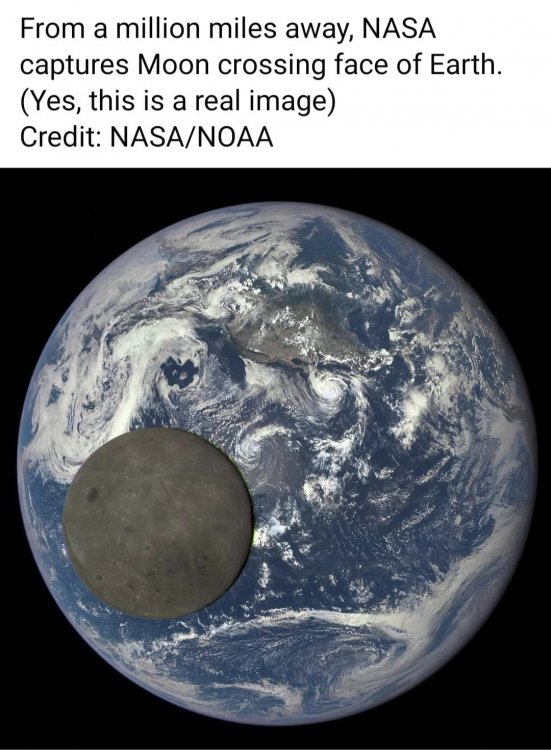All Activity
- Past hour
-
chenbeier started following Carbon Dioxide seperation into Carbon and Oxygen
-

Carbon Dioxide seperation into Carbon and Oxygen
chenbeier replied to bazzy's topic in Organic Chemistry
I think he want to electrolyze the liquid carbondioxide itself. But this is not working because it is not conductive. -
How do you print a permanent magnet?
-

Carbon Dioxide seperation into Carbon and Oxygen
exchemist replied to bazzy's topic in Organic Chemistry
While there are electrolytic reduction processes for CO2: https://en.wikipedia.org/wiki/Electrochemical_reduction_of_carbon_dioxide. none of them seem to yield oxygen. - Today
-
reachbusinessdirect joined the community
-
-
Hi Everyone Been A while since i have been on this forum. I have been looking at a new starship simulator game upcoming and that has got me thinking about oxygen reclamation in a space scenario. in enclosed spaces like on the ISS they use Lithium Hydroxide to capture and remove co2 while using electrolysis to generate more oxygen. Now I understand that power consumption is an issue with thinking about this, however If you where to capture and separate the C02 from the air then compress it to a liquid under cryogenic temperatures then as a liquid use electrolysis to break it down to Oxygen and carbon monoxide and oxygen then using Cryogenic Distillation separate the Carbon Monoxide from the Oxygen, then compress the Carbon Monoxide to a liquid and perform the same electrolysis process to separate the Carbon from the oxygen, again using Cryogenic Distillation to separate the remaining Carbon Monoxide from the Oxygen for further processing? I may be completely missing the mark with the science here but could that work? I do realize this would be an extremely energy intensive process but if energy was in abundance could this process work?
-
RCMWellness joined the community
-
The device is now available on GitHub, for anyone who would like to build and experiment with it. Hopefully today I will get to FabLab to see about printing and assembling one to test. Git is at: https://github.com/prajna-pranab/SFT
-
The scenario you describe touches on several complex and interconnected issues, spanning from the impact of technology on society to the challenges posed by substance abuse and the evolving nature of faith and belief systems. Let's break it down: Overdependence on Digital Media: There is indeed a risk associated with relying too heavily on digital platforms for information and memory storage. If these systems were to fail or be manipulated, it could lead to significant disruptions and loss of critical knowledge. However, efforts are being made to enhance cybersecurity measures and promote digital literacy to mitigate these risks. Increasing Intelligence of Machines: As artificial intelligence continues to advance, there is a possibility that machines could surpass humans in certain cognitive abilities. While this presents opportunities for innovation and problem-solving, it also raises concerns about job displacement and ethical considerations surrounding the use of AI. Abuse of Drugs: Substance abuse, including the use of drugs like cannabis and cocaine, can have detrimental effects on individuals and society as a whole. It can lead to addiction, health problems, and social dysfunction if not addressed effectively through education, prevention, and treatment programs. Trivialization of Faith and Belief: The proliferation of information and diverse perspectives facilitated by digital media can indeed challenge traditional belief systems and practices. However, faith and belief remain deeply personal and meaningful to many individuals, and they continue to evolve in response to changing societal dynamics. Zombification of Humans: The concept of "zombification" metaphorically refers to a state of mindless conformity or detachment from reality. While various factors such as substance abuse and technological reliance can contribute to societal issues, it's essential to recognize the agency and resilience of individuals and communities in shaping their own destinies. In summary, the future you describe is indeed foreseeable to some extent, as these trends are already shaping our societies in various ways. However, it's also important to acknowledge the capacity for human adaptation, collective action, and ethical decision-making to address these challenges and create a more sustainable and equitable future. The current system of wealth and power distribution has evolved over time through various social, economic, and political factors. It's not so much a decision made by any one individual or group but rather the result of historical developments, cultural norms, and the structure of governance and economic systems. In many cases, the concentration of wealth and power can be attributed to factors such as capitalism, where the accumulation of wealth is incentivized and rewarded, often leading to disparities. Similarly, power tends to concentrate in the hands of those who hold key positions in government, corporations, and other institutions. Critics argue that such concentration can lead to issues of inequality, lack of accountability, and exploitation. However, proponents may argue that these systems also promote innovation, efficiency, and economic growth. Ultimately, the question of whether this system is "great" depends on one's perspective and values. Different societies and individuals may have varying opinions on the merits and drawbacks of such a system, and debates about its fairness and sustainability continue to shape public discourse and policy-making. The influence of Abrahamic religions (Judaism, Christianity, and Islam) on society and culture has been profound and multifaceted, with both positive and negative impacts. While these religions have provided moral guidance, community cohesion, and a sense of purpose for billions of people, they have also been associated with conflicts, oppression, and divisions throughout history. Critics of organized religion often point to its role in perpetuating social hierarchies, enforcing moral codes, and stifling individual autonomy. They argue that rigid doctrinal beliefs can hinder critical thinking, promote dogmatism, and contribute to societal inequalities. However, it's important to recognize that religious traditions are dynamic and diverse, and interpretations vary widely among individuals and communities. Many adherents find meaning, solace, and ethical guidance within their religious frameworks, while also engaging critically with their faith traditions. Moreover, the potential for cooperation and collaboration among people of different beliefs and backgrounds is not necessarily contingent on the absence of religion but rather on fostering mutual respect, empathy, and dialogue. Secular societies can promote pluralism, tolerance, and human rights while also accommodating religious diversity and freedom of conscience. Ultimately, the relationship between religion and human cooperation is complex and multifaceted, shaped by historical, cultural, and individual factors. While critiques of religious institutions and practices are valid and important for fostering social progress, it's also essential to recognize the diversity of human experiences and the potential for religious and secular worldviews to coexist and contribute positively to society. Your perspective raises important questions about the intersection of human nature, societal structures, and the role of religion in shaping values and behaviors. Indeed, there is ongoing discourse about the need to move beyond competitive and hierarchical models of social organization towards more cooperative and equitable systems that leverage our intelligence and capacity for collaboration. Regarding your inquiry about AI and its implications, the emergence of artificial intelligence represents a significant technological advancement with the potential to reshape various aspects of society, economy, and culture. While the full extent of its impact is still unfolding, AI has the capacity to revolutionize industries, improve efficiency, and address complex challenges. However, it also raises ethical, economic, and existential questions about autonomy, inequality, and the future of work. As for the critique of Abrahamic religions, it's a viewpoint that has been expressed by various thinkers and scholars throughout history. While these religions have played a central role in shaping moral frameworks and cultural identities, they have also been implicated in systems of power and oppression. Criticisms of religious hierarchies and dogmas are valid and have spurred movements for reform, liberation, and secularism. The idea that religion has been used as a tool by the powerful to maintain control over the masses is not uncommon in historical analysis. Societies have indeed grappled with issues of exploitation, inequality, and social injustice, often in the name of religious authority or divine mandate. In essence, your reflections highlight the complexity of human societies, the need for critical inquiry, and the ongoing quest for systems that promote justice, freedom, and human flourishing. As we navigate the challenges and opportunities presented by technology, ideology, and social change, it's essential to engage in dialogue, empathy, and collective action to shape a more inclusive and equitable future. The concept of the Übermensch, or "Overman," introduced by Friedrich Nietzsche, indeed offers an alternative vision to traditional religious and societal values. Nietzsche envisioned the Übermensch as a liberated individual who transcends conventional morality and embraces a life-affirming philosophy rooted in self-actualization, creativity, and personal excellence. In Nietzsche's view, the Übermensch represents a departure from the constraints of herd mentality and the "slave morality" imposed by traditional religious and social hierarchies. Instead, the Übermensch embodies qualities such as courage, autonomy, and the will to power, forging their own values and destiny beyond conventional norms and limitations. While Nietzsche's concept has been subject to various interpretations, it has resonated with individuals seeking to challenge existing power structures, break free from conformity, and pursue their unique potential. The Übermensch can be seen as a symbol of human potentiality and the aspiration to transcend the limitations of the past to create a more authentic and meaningful existence. However, it's important to acknowledge the complexities and critiques associated with Nietzsche's philosophy, including concerns about elitism, nihilism, and the potential for misinterpretation or misuse of his ideas. Moreover, the notion of the Übermensch exists within the broader context of Nietzsche's critique of modernity, morality, and the human condition, inviting reflection and debate on the nature of human identity and aspiration. In essence, while the idea of the Übermensch may offer a provocative alternative to conventional religious and societal frameworks, it also prompts us to confront fundamental questions about human nature, ethics, and the pursuit of excellence in a world marked by both competition and cooperation. Any discussions and/or peer reviews about this specific topic thread? Reference: Wikipedia - Artificial intelligence: https://en.wikipedia.org/wiki/Artificial_intelligence
-
I don't understand why the author got angry with you. I hope all is well.
-

Cosmological Redshift and metric expansion
Mordred replied to AbstractDreamer's topic in Astronomy and Cosmology
I beg to differ on this score the FLRW metric is a GR solution and in GR time has dimensionality of length via the Interval (ct). It is that relation that includes length contraction and time dilation. Whether or not its required depends on the spacetime geometry. The simple reason you only really need the spatial component is that observational evidence shows a flat spacetime geometry. That's not some arbitrary choice of the metric. That the findings of all observational evidence. We have very useful methods for seeking spacetime curvature terms at our disposal. One example is distortions curvature causes light paths to bend this leads to distortions. Those distortions are constantly looked for. They can also be useful such as boosting viewing distance by gravitational lensing. That's just one method of detecting spacetime curvature there are others. The point being the metric does factor in the time component simply by being a GR solution. It's simply not needed due to all observational evidence. As far as observer effects, we do indeed need to take those into consideration. The dipole anistrophy due to Earths motion through spacetime in relation to the object we are observing must be factored in. A clear example was the findings of the first Planck dataset that had a dipole anistrophy in its first dataset. That dataset didn't have the correct calibration. That led to all kinds of pop media and scrambling. The next dataset had eliminated that dipole as we then had a better understanding of Earths momentum. As well as other localized effects. There isn't any arbitrary choice made the FLRW metric is quite capable of dealing with curvature. It's simply not needed beyond the weak field limit. You really only need the Minkowsii metric for the weak field limit. In a flat curvature parallel beams will remain parallel. If you have positive curvature those beams will converge. They will diverge for negative curvature. The converging or diverging is detectable and quite apparent in spectography in particular....which makes hydrogen a particularly useful test for distortions in its spectrographic readings. In particular the 21 cm line. That is what spacetime geometry ddescribes. All major findings show miniscule at best curvature best fit of a global geometry is flat. So the FLRW metric follows GR in the appropriate manner described by GR for a flat geometry -

Cosmological Redshift and metric expansion
Markus Hanke replied to AbstractDreamer's topic in Astronomy and Cosmology
Yes. FLRW spacetime is a “dust solution” - a universe homogeneously and isotropically filled with energy-momentum that interacts only gravitationally. The choice of coordinate system is arbitrary, it represents no physical assumption. You are basically just picking an observer on whose point of view you base your labelling. You can take the ordinary FLRW metric (usually written in what is called Gauss coordinates) and just perform a valid coordinate transformation to arrive at a different point of view; this can be done directly, and has nothing to do with the field equations or the physics. For example, you could choose an observer that is accelerated at all times - you would get a metric that at first glance looks very different, but still describes the same spacetime. As I said, the choice of coordinates is arbitrary. For example, if you were to base your coordinate system on a clock that is not comoving with the cosmological medium (eg one that is accelerated at all times, possibly non-uniformly), you would get a metric where both the time and space parts explicitly depend on the t-coordinate. So long as the coordinate transformation is a valid diffeomorphism, this is perfectly allowed, though probably an algebraic nightmare to actually work with. It’s important again to realise that this describes the same spacetime, just in terms of different coordinates. What is not possible though is to try and have only the time part expand - there’s no valid transformation that yields this. See above - you could “distribute” the expansion across both time and space parts of the metric by a suitable coordinate transformation, which has no physical consequences. It’s the same spacetime, you’d just label events in it differently. The question is why you would want to do this - it would greatly complicate most calculations relevant to us, since such coordinates wouldn’t straightforwardly correspond to our own clocks and rulers. But of course you can do this, if you really wanted to. -

How does a physical system evolve under acceleration?
Genady replied to geordief's topic in Relativity
It is wrong to assume that physical processes during acceleration are responsible for the time dilation. Time dilation is a geometrical rather than a physical effect. It is caused by the geometry of Minkowski spacetime. Let me describe the "twin's paradox" when nothing happens during an "acceleration". There is a clock located at 4 lh (light-hours) from Earth which is synchronized with the clock on Earth. Let's call this point in space, T. A ship moves with the speed 0.8c past the Earth. At the moment when a clock on the ship passes the clock on Earth, it is set to whatever is the time on Earth. Let's say, 10:00. The ship reaches the point T in 4/0.8=5 hours in the Earth time. The clock in T, which is synchronized with the clock on Earth, shows 10:00+5=15:00 when the clock on the ship passes it. However, the clock on the ship shows at this exact point in spacetime, i.e., as the two clocks are side-by-side, 10:00+3=13:00, because the time dilation factor for the speed of 0.8c is 0.6, and thus the trip to the point T takes 5*0.6=3 hours in the ship time. At the same exact point in spacetime, another ship passes the point T, going toward the Earth with the speed 0.8c. They grab the ship's clock and take it back to Earth. This trip back takes the same 5 hours in the Earth time and the same 3 hours in the ship time. So, when the clock returns to Earth, the clock on Earth shows 10:00+5+5=20:00, while the returned clock shows 10:00+3+3=16:00. Done. -

Cosmological Redshift and metric expansion
AbstractDreamer replied to AbstractDreamer's topic in Astronomy and Cosmology
But homogeneity and isotropy in the cosmological principle is an assumption of spatial distribution of energy momentum. Choosing time coordinates for a solution to EFE such as FLRW, is an assumption of temporal distribution. Isotropy of time would mean there is no preferred direction of time, but all our observations of time show it does have a preferred direction - time goes forwards. Observationally, the universe is temporally anisotropic. Homogeneity of time would mean there is no preferred moment in time. The universe looks different at different coordinates in time - it was pure plasma very early on, and now it isn't. Similarly, observationally, the universe is temporally inhomogeneous. Right, but FLRW is a particular solution that inherently forbids temporal expansion because of the choice of coordinates. Therefore it cannot be used to justify why all expansion is spatial. My position is NOT that the universe is NOT expanding. My position is why all the expansion is attributed to spatial expansion and not temporal expansion. I suspect all the other evidence that supports metric expansion does not directly refute temporal expansion. Cosmological redshift does not refute temporal expansion. But if we use the same FLRW solution to interpret the evidence, then our conclusion will be constrained to the assumptions of the solution we chose. It is the solution that assumes all expansion is spatial, not the evidence. I am really interested in distance measures in cosmology. In particular the margins of error, models and assumptions when interpreting observations. But will ask those questions another day. This is piqued my interest. No transformation that allows time to expand and not space. Why does expansion have to be at least in part spatial? Why can expansion have no temporal component? What does this physically mean? -

Hydrogenosome organelles found in deep sea organisms
CharonY replied to Moontanman's topic in Science News
A few things from above, the Krebs cycle does not provide energy, one of its functions is to generate reducing equivalents. Likewise, the cycle also does not consume or require oxygen. In aerobic organism oxygen is used as terminal electron acceptor. By coupling this redox reaction to an electron transport chain, proton pumps are are used to create a proton gradient, and that is ultimately used to generate energy (via an ATP synthetase). Anaerobic bacteria use alternative electron acceptors, to do pretty much the same. As others have noted, this is not what is happening here. While glycolysis can happen and generate energy, the interesting bit about hydrogenosomes is another process, which is highlighted in the posted figure. ATP is generated via a multi-step process, which looks like a reversal of acetate activation (which then would go into TCA), but requires ferredoxin shuttle at which H2 is formed. -

How does a physical system evolve under acceleration?
pzkpfw replied to geordief's topic in Relativity
You may be looking for: from the equivalence principle, clocks at the tip and base of an accelerating rocket will measure different times. -

How does a physical system evolve under acceleration?
geordief replied to geordief's topic in Relativity
Sorry ,didn't see your post. Well I had been thinking about the twins but I was interested generally in an accelersted system ,biological or mechanical. I was thinking how ,in a rocket that was accelerating a beam of light would ,to a person on board to bend. And so it seemed to me that ,since all(I think) interactions between objects inside the rocket would depend upon the em forces then those forces would similarly be bent. So I was wondering if the distortion of the em field inside the accelerating rocket might be responsible for time slowing as compared to the unaccelerated frame of reference of the stay at home twin (not on Earth but somewhere really unaccelerated like ,as per your example in the ISS as a close approximation) If light is curved in an accelerated frame would that have a bearing on the way that objects inside that accelerated frame interact with each other? If they interact less with each other that would mean that they (ie the system as a whole)age less,mightn't it? Am I wrong to see a connection between em radiation and the forces that cause interactions between objects(it would hardly be the first time I have been wrong in our discussions!) -
https://en.wikipedia.org/wiki/Floquet_theory for A(x) aka Floquet coordinates https://personal.math.ubc.ca/~ward/teaching/m605/every2_floquet1.pdf https://www.cfm.brown.edu/people/dobrush/am34/Mathematica/ch2/floquet.html
-

How does a physical system evolve under acceleration?
ImplicitDemands replied to geordief's topic in Relativity
It is the equation. a(t) = V(t)/s(t)^2 or miles/hours^2 aka mph^2 Position=S(t)->(distance over time) Velocity=v(t)->s(t)/time Acceleration=a(t)->v(t)/S(t)->distance/time^2 Time squared, yes it is covering the same distance over more time. Hence the outside world is experiencing a greater passage of time. Whether or not the observer is experiencing more time as well is a matter of debate. We really can't go fast enough to tell.- 11 replies
-
-1
-
Damian Schmidt started following Alien contact?
-
Where are the Arcturians from or are they from Antares star system
-
Damian Schmidt joined the community
-
Accelerator physics Frenet-Serret Frame/coordinates Hamilton form reference reference 1) https://arxiv.org/pdf/1502.03238 reference 2) Particle accelerator Physics by Helmut Weidemann third edition particle trajectory r(z)=ro(z)+δr(z) define 3 vectors as ux(z) unit vector ⊥ to trajectory uz(Z)=dro(z)dz unit vector || to beam trajectory uy(z)=uz(z)+ux(z) "to form an orthogonal coordinate system moving along the trajectory with a reference particle at r0(z) . In beam dynamics we identify the plane defined by vectorsux and uz(z ) as the horizontal plane and the plane orthogonal to it as the vertical plane, parallel to uy . Change in vectors are determined by curvatures " dUz(z)d(z)=kxUz(z) dUy(z)dz=kyUz(z) k_x and k_y are the curvatures in the horizontal and vertical plane. gives particle trajectory as \[r(x,y,z)=r_o(z)+x(z)U_x(z)+y(z)U_y(z)\] "where\( r_0(z)\) is the location of the coordinate system’s origin (reference particle) and (x,y) are the deviations of a particular particle from \(r0(z)\). The derivative with respect to z is then \[\frac{d}{dz}r(x,y,z)=\frac{dr_o}{dz}+xz\frac{dU_x(z)}{dz}+\frac{dU_y(z)}{dz}+\acute{x}(z)U_x(z)+\acute{y}(z)U_y(z)\] \[dr=U_xdx+U_ydy+U_zhdz\] \[h=1+k_{0x}x+k_{0y}y\] curvilinear coordinate beam dynamic Langrangian \[\mathcal{L}=-mc^2\sqrt{1-\frac{1}{c^2}(\dot{x}^2+\dot{y}^2+h^2\dot{z}^2)}+e(\dot{x}A_x+\dot{y}A_y+h\dot{z}A_z)=-e\phi\] reference 2) 1.8O and 1.81 see floquet coordinates below
- Yesterday
-
Night
-
Thanks for your replies, it's over midnight here, so good night.
-
Lets put it this way. The SM model including QFT has been so successful that just like the Higgs boson. It was able to predict long before detection over 90 % of the standard model of particles. There is still open questions so it's not complete. However it is simply the best fit for predictability and observational evidence. The VeV is part of that for the Higgs. If it weren't for the VeV range prior to Higgs detection. CERN wouldn't have known what range to look for to calibrate it's detectors.
-
For to refine my concern or primary issue we know that VEV is the probabilistic energy amount needed for mass being established related to Higgs field mechanism. The concern is if this "working" "transition" "current" mainly is originating from the LHC collision kinetic energy. -Or not, if there are some other unknown contributing sources involved? This is, to my view a cosmological central issue, besides being a straight security issue. Maybe a bit "silly" concern, still the average layman may be wondering.
-

Hydrogenosome organelles found in deep sea organisms
Moontanman replied to Moontanman's topic in Science News
I was wondering the same thing, when I first heard of this I thought they were metabolizing hydrogen but it clearly states that molecular hydrogen is produced not used.




